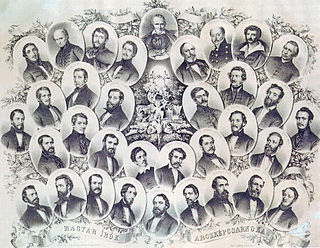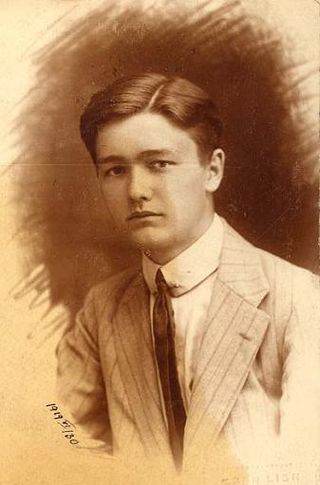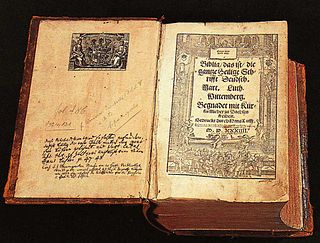
The first Bible translations into Hungarian date from the 15-16th centuries, as do the first Hussite Bible and the Vizsoly Bible. [1] [2]

The first Bible translations into Hungarian date from the 15-16th centuries, as do the first Hussite Bible and the Vizsoly Bible. [1] [2]
| Translation | John (János) 3:16 |
|---|---|
| Hussite Bible [7] (1416) | Mert így szerette Isten a világot, hogy ő Fiát eggyetlen egy szülöttet adná, hogy menden, ki hiszen őbele, el ne veszjen, de vallja az örök életet. |
| Vizsoly Bible [8] (1590) | Mert úgy szerette Isten e világot, hogy az ő egyszülött Fiát adta, hogy valaki hiszen ő benne, el ne vesszen, hanem örök élete legyen. |
| Káldi Biblia (1626) | Mert úgy szerette Isten e világot, hogy az ő egyszülött Fiát adta, hogy mindaz, aki őbenne hisz, el ne vesszen, hanem örök élete legyen. |
| Szent István Társulati Biblia (1973) | Mert úgy szerette Isten a világot, hogy egyszülött Fiát adta oda, hogy aki hisz benne, az el ne vesszen, hanem örökké éljen. |
| Magyar Bibliatársulat (1975) | Mert úgy szerette Isten a világot, hogy egyszülött Fiát adta, hogy aki hisz őbenne, el ne vesszen, hanem örök élete legyen. |
| Szent Jeromos Bibliatársulat (1997) | Mert úgy szerette Isten a világot, hogy egyszülött Fiát adta, hogy mindaz, aki őbenne hisz, el ne vesszen, hanem örök élete legyen. |
| Hungarian version of the New World Translation [6] (2017) | Mert Isten annyira szerette a világot, hogy az egyszülött Fiát adta, hogy aki hisz benne, ne pusztuljon el, hanem örök élete legyen. |

Hungarian literature is the body of written works primarily produced in Hungarian, and may also include works written in other languages, either produced by Hungarians or having topics which are closely related to Hungarian culture. While it was less known in the English-speaking world for centuries, Hungary's literature gained renown in the 19th and 20th centuries, thanks to a new wave of internationally accessible writers like Mór Jókai, Antal Szerb, Sándor Márai, Imre Kertész and Magda Szabó.

Modern English Bible translations consists of English Bible translations developed and published throughout the late modern period to the present.
Several Spanish translations of the Bible have been made since approximately 700 years ago.

Hungarian is a Uralic language of the Ugric group. It has been spoken in the region of modern-day Hungary since the Hungarian conquest of the Carpathian Basin in the late 9th century.

Since the arrival of Christianity in China, the Bible has been translated into many varieties of the Chinese language, both in fragments and in its totality. The first translations may have been undertaken as early as the 7th century AD, but the first printed translations appeared only in the nineteenth century. Progress on a modern translation was encumbered by denominational rivalries, theological clashes, linguistic disputes, and practical challenges at least until the publication of the Protestant Chinese Union Version in 1919, which became the basis of standard versions in use today.

The Hussite Bible is the oldest known Hungarian, as well as a general Uralic Bible translation, dated to the 1420s–1430s.
The Ilocano Bible, published in 1909, is the second Bible to be published in any Philippine language, after the Tagalog which was published in 1905.
The first complete Catalan Bible translation was produced by the Catholic Church, between 1287 and 1290. It was entrusted to Jaume de Montjuich by Alfonso II of Aragon. Remains of this version can be found in Paris.

Bible translations in the Middle Ages went through several phases, all using the Vulgate. In the Early Middle Ages, written translations tended to be associated with royal or episcopal patronage, or with glosses on Latin texts; in the High Middle Ages with monasteries and universities; in the Late Middle Ages, with popular movements which caused, when the movement were associated with violence, official crackdowns of various kinds on vernacular scripture in Spain, England and France.

The Vizsoly Bible, also called Károli Bible was the first Bible printed in the Hungarian language. It was translated in the 16th century by pastor Gáspár Károli and fellow Calvinists and was printed in 1590 by Bálint Mantskovit. A copy is kept on permanent display in the Hungarian village of Vizsoly.

László Németh was a Hungarian dentist, writer, dramatist and essayist. He was born in Nagybánya the son of József Németh (1873–1946) and Vilma Gaál (1879–1957). Over the Christmas of 1925, he married Ella Démusz (1905–1989), the daughter of János Démusz, a keeper of a public house. Between 1926 and 1944 they had six daughters, but two of them died in infancy. In 1959 he visited the Soviet Union. In the last part of his life he lived and worked in Tihany. He died from a stroke on 3 March 1975 in Budapest and was buried in Farkasréti Cemetery, Budapest, where he shares a grave with his wife.

Although the biblical themes have been an essential formative substance of the Portuguese culture, composition in that language of a complete translation of the Bible is quite late when compared with other European languages. The beginnings of the written transmission of the sacred text in Portuguese, parallel to its traditional liturgical use in Latin, are related to the progressive social acceptance of the vernacular as a language of culture in the low-medieval period. And even though the official language of the Portuguese monarchy dates back to the end of the thirteenth century, during the reign of D. Dinis, the writer Carolina Michaëlis de Vasconcelos (1851–1925), for example, was able to state categorically that, in the medieval period, "Portuguese literature, in matters of biblical translations, is a poverty Desperate" – a judgment that remains valid, experts say.

A Protestant Bible is a Christian Bible whose translation or revision was produced by Protestant Christians. Typically translated into a vernacular language, such Bibles comprise 39 books of the Old Testament and 27 books of the New Testament, for a total of 66 books. Some Protestants use Bibles which also include 14 additional books in a section known as the Apocrypha bringing the total to 80 books. This is in contrast with the 73 books of the Catholic Bible, which includes seven deuterocanonical books as a part of the Old Testament. The division between protocanonical and deuterocanonical books is not accepted by all Protestants who simply view books as being canonical or not and therefore classify books found in the Deuterocanon, along with other books, as part of the Apocrypha. Sometimes the term "Protestant Bible" is simply used as a shorthand for a bible which contains only the 66 books of the Old and New Testaments.

The earliest Bible translations into Polish date to the 13th century. The first full ones were completed in the 16th.

The Bible has been translated into multiple Philippine languages, including Filipino language, based on the Tagalog, the national language of the Philippines.
John Albeni de Alben et Medve was a Hungarian prelate of German descent, who served as bishop of Pécs in the Kingdom of Hungary from 1410 to 1420 and as bishop of Zagreb in the Kingdom of Croatia within the Kingdom of Hungary from 1421 until his death.

Albert Szenczi Molnár was a Hungarian Calvinist pastor, linguist, philosopher, poet, religious writer and translator.

Ernő Polgár was a Radnoti Prize and Nagy Lajos Prize-winning author. In 2007 he was awarded one of the highest Hungarian rewards: the Knight's Cross of the Order of the Republic of Hungary. He was nominated for Nobel Prize in Literature in 2017 for the year of 2018. He was a world literary rank Hungarian-European author, editor, littérateur and dramaturgist. Since 2018 he had been living in Borneo Island, Brunei Kingdom, spending time in his "writing house".
György Lépes (1375 – 18 March 1442, Marosszentimre) was a Transylvanian Catholic Bishop.

The Monastery of St Lawrence at Buda, also known as the Pauline Monastery of Budaszentlőrinc, is a former monastery belonging to the Pauline Order. Destroyed by the Ottomans, the remains of the monastery grounds are in an area called Szépjuhászné which is in the saddle between Hárshegy and János Hill in the 2nd district of Budapest. It is where the Pauline Order founded their first friary. Today, only the foundation walls of the monastery remain.